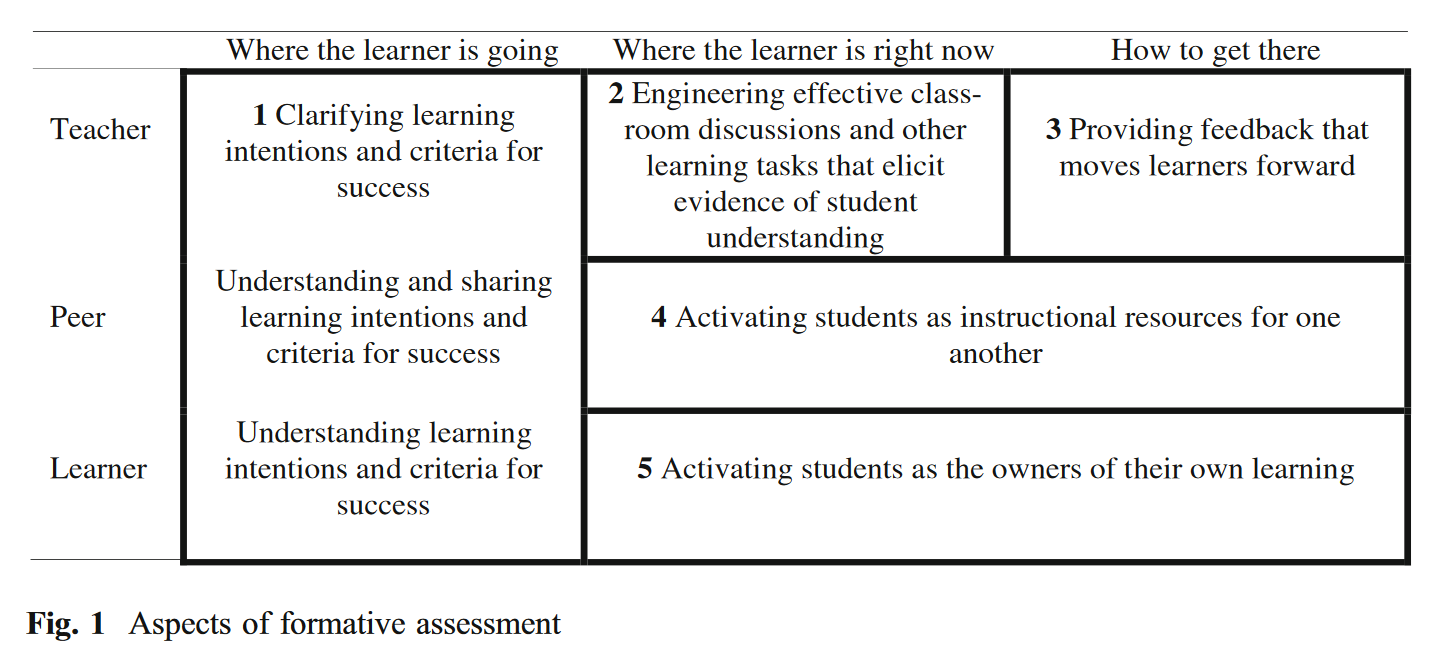Assessment for learning
See also: assessment, teaching, learning, targeted-teaching
AKA: formative assessment
Apparently arising from ideas of Black and Wiliam (2009) aound formative learning. Designing assessment approaches that encourage/support learning
Practice in a classroom is formative to the extent that evidence about student achievement is elicited, interpreted, and used by teachers, learners, or their peers, to make decisions about the next steps in instruction that are likely to be better, or better founded, than the decisions they would have taken in the absence of the evidence that was elicited. (Black & Wiliam, 2009, p. 9)
Boaler (2015) describes it as
students become knowledgeable about what they know, what they need to know, and ways to close the gap between the two. Students are given information about their flexible and growing learning pathways that contributes to their development of a growth mathematics mindset
Activity types for formative assessment#
Black & Wiliam (2009) identify five practices suggested by evidence
- Clarifying and sharing learning intentions and criteria for success;
- Engineering effective classroom discussions and other learning tasks that elicit evidence of student understanding;
- Providing feedback that moves learners forward;
- Activating students as instructional resources for one another; and
- Activating students as the owners of their own learning

Five key strategies for formative assessment#
Wiliam (2017) provides
- Clarifying, sharing, and understanding learning intentions and criteria for success
- Eliciting evidence of learning.
- Providing feedback that moves learning forward.
- Activating students as learning resources for one another.
- Activating students as owners of their own learning.
References#
Black, P., & Wiliam, D. (2009). Developing the theory of formative assessment. Educational Assessment, Evaluation and Accountability(Formerly: Journal of Personnel Evaluation in Education), 21(1), 5--31. https://doi.org/10.1007/s11092-008-9068-5
Boaler, J. (2015). Mathematical Mindsets: Unleashing Students’ Potential Through Creative Math, Inspiring Messages and Innovative Teaching. John Wiley & Sons, Incorporated.
Wiliam, D. (2011). What is assessment for learning? Studies In Educational Evaluation, 37(1), 3--14. https://doi.org/10.1016/j.stueduc.2011.03.001
Wiliam, D. (2017). Embedded Formative Assessment: (Strategies for Classroom Assessment That Drives Student Engagement and Learning). Solution Tree.